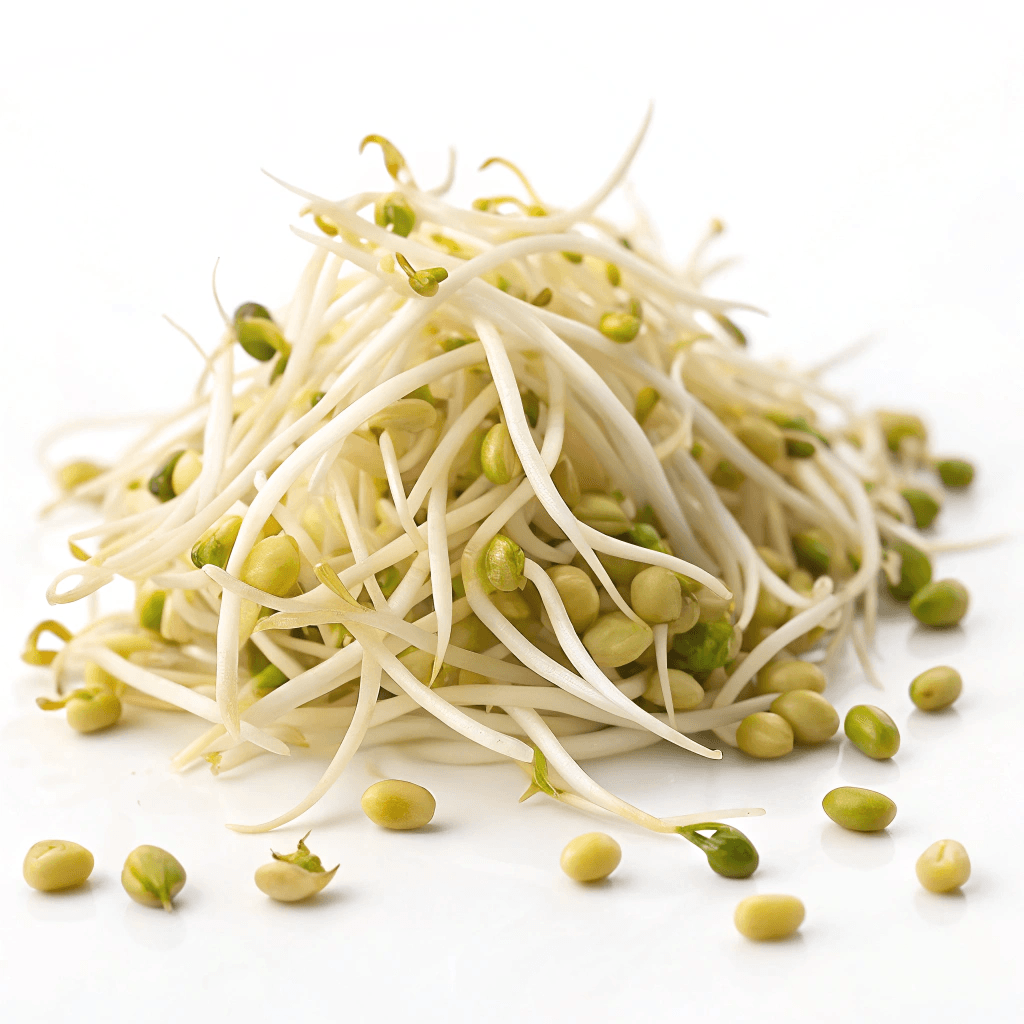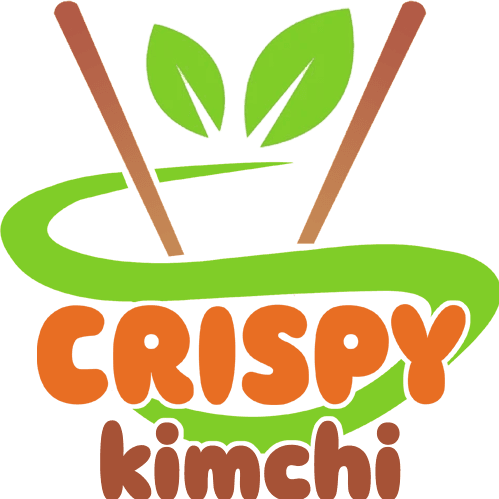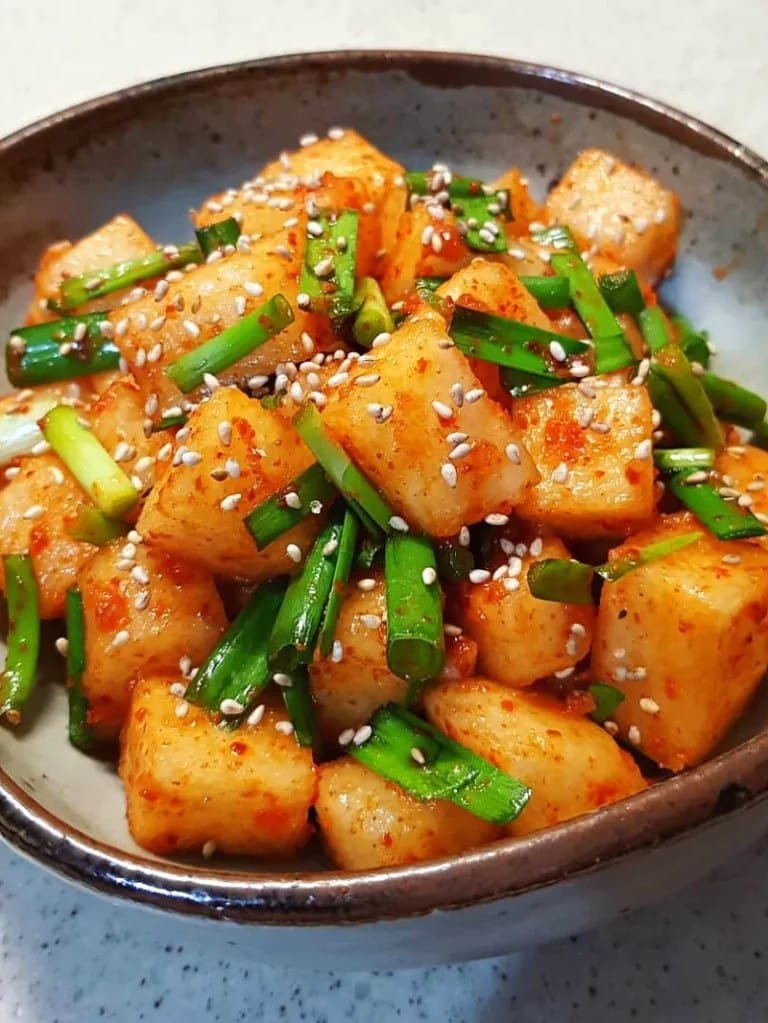Mung Bean Sprouts: A Nutritious Guide
Mung bean sprouts are a versatile and nutritious ingredient. This article explores their benefits, uses, and how to enjoy them.
Introduction
Mung bean sprouts, once a niche ingredient, are quickly gaining popularity in the United States for their incredible nutritional profile and versatility in the kitchen. Therefore, this comprehensive guide is designed to provide everything you need to know about this amazing food, from its origins to its health benefits, plus tips on how to cook them. In addition, we will explore the reasons why you should include them in your diet. Consequently, you’ll discover that mung bean sprouts are not only tasty, but also incredibly good for you.
What Are Mung Bean Sprouts?
Mung bean sprouts are, in essence, the germinated seeds of the mung bean plant. They are created by soaking mung beans in water until they sprout. This sprouting process activates enzymes and increases the nutritional value of the beans. Mung beans, the source of these sprouts, have a rich history, primarily cultivated in Asia for centuries. As a result, they have become an integral part of many Asian cuisines.
However, it is essential to differentiate between mung beans and mung bean sprouts. Mung beans are small, green, oval-shaped legumes, while mung bean sprouts are the slender, pale shoots that grow from the beans. Therefore, the most apparent difference between them is their appearance. The sprouts are typically white or pale yellow with small, delicate leaves at the end, giving them a crisp, slightly crunchy texture.
Moreover, the production of mung bean sprouts varies from commercial to home settings. Commercial sprouts are usually grown in large trays with controlled environments, while you can easily grow them at home in a simple jar or container.
Origin and History of Mung Beans
Mung beans, the precursor to mung bean sprouts, have a long and storied history. Native to the Indian subcontinent, they have been a staple food in Asia for thousands of years, thus highlighting their cultural significance. Furthermore, the cultivation of mung beans spread throughout Asia, becoming an important crop in China, Southeast Asia, and other regions.
Mung Beans vs. Mung Bean Sprouts: Key Differences
It is important to clarify that although mung bean sprouts are derived from mung beans, they have different properties. Mung beans are the dry legumes, while mung bean sprouts are the germinated seedlings. Their textures, flavors, and nutritional profiles vary significantly. For instance, dried mung beans require cooking, whereas mung bean sprouts can be eaten raw or cooked. Therefore, understanding these differences is essential when using them in your cooking.

Nutritional Powerhouse: The Health Benefits of Mung Bean Sprouts
Mung bean sprouts are not just a culinary delight, but also a powerhouse of essential nutrients. They provide a great balance of macronutrients, including complex carbohydrates, a good amount of plant-based protein, and very little fat. In addition, these tiny sprouts are packed with micronutrients and antioxidants.
Macronutrient Profile
Firstly, regarding carbohydrates, mung bean sprouts primarily contain complex carbs, which are slowly digested and provide sustained energy. Also, they are an excellent source of dietary fiber, which is essential for digestion. Furthermore, the protein content in mung bean sprouts is notable, offering various amino acids necessary for bodily functions. Finally, their fat content is very low, making them a good addition to any healthy diet.
Micronutrient Profile
In addition to macronutrients, mung bean sprouts are a great source of many vitamins and minerals. For example, they are rich in Vitamin K, which is important for blood clotting. They also have a good amount of Vitamin C, an antioxidant that boosts your immune system. Moreover, they contain some B vitamins that aid in various metabolic processes. Likewise, minerals such as manganese, folate, phosphorus, magnesium, and potassium are found in significant quantities in these sprouts.
Antioxidant Properties
Moreover, mung bean sprouts are packed with antioxidants like flavonoids and phenolic compounds. Therefore, these antioxidants help in fighting free radicals in the body, reducing the risk of chronic diseases. As a result, regular consumption of mung bean sprouts can contribute to overall wellness.
Health Benefits
Because of their rich nutrient profile, these sprouts offer multiple health advantages. Firstly, the high fiber content promotes good digestive health. Secondly, they can contribute to heart health by helping to reduce cholesterol levels and manage blood pressure. In addition, the Vitamin C in the sprouts provides a boost to the immune system. Because they are low in calories and high in fiber, they can also help with weight management. Therefore, adding mung bean sprouts to your diet is a great way to improve your well-being. They also have anti-inflammatory properties and can help with blood sugar control.
Nutritional Content (Per 100g)
| Nutrient | Amount |
| Calories | 30 |
| Carbohydrates | 6 g |
| Protein | 3 g |
| Fat | 0.2 g |
| Fiber | 1.8 g |
| Vitamin K | 33 mcg |
| Vitamin C | 13.7 mg |
| Folate | 61 mcg |
| Manganese | 0.2 mg |
| Phosphorus | 66 mg |
| Potassium | 153 mg |
| Magnesium | 18 mg |
Buying and Storing Mung Bean Sprouts
Finding fresh mung bean sprouts is usually easy if you know what to look for. Moreover, you can find them in most grocery stores, Asian markets, farmer’s markets, or online retailers. However, selecting and storing them properly will guarantee you enjoy them at their best.
Where to Buy
Mung bean sprouts are available in the produce section of most major grocery stores. Furthermore, Asian markets often carry a wider variety of sprouts, including different sizes and freshness levels. Farmer’s markets can be another good option, especially if you are looking for locally sourced produce. You can also find them in online specialty food stores. Therefore, it is always good to have options!
How to Select Mung Bean Sprouts
When choosing mung bean sprouts, it’s important to look for quality indicators. Firstly, ensure they are crisp and firm to the touch. Secondly, select sprouts with a light, pale color, avoiding any that appear brown or discolored. Also, avoid sprouts that have a musty or sour smell, as this indicates they may be past their prime. Lastly, they should have a good texture without being slimy, which indicates they may be decomposing.
How to Store Mung Bean Sprouts
To keep your sprouts fresh, it is crucial to store them properly. It is best to keep them refrigerated in a sealed container or bag. In order to prevent them from drying out, you can add a damp paper towel to the container. You should try to use them within a few days for the best texture and flavor. Although freezing is possible, it will impact their texture, making them softer. Therefore, frozen sprouts are best used in soups or stir-fries, where the texture is not as important.
Preparing and Cooking with Mung Bean Sprouts
Mung bean sprouts are extremely versatile in the kitchen. Therefore, their mild flavor makes them a fantastic addition to various recipes. In addition, their ease of preparation makes them a favorite ingredient for many home cooks.
Washing and Prepping
Before using mung bean sprouts, it’s important to wash them thoroughly to remove any dirt or debris. Simply rinse them under cold running water and drain them in a colander. This will ensure they are clean and safe for consumption. After they are washed, they are ready to be used raw or cooked.
Cooking Methods
There are many different methods you can use to cook mung bean sprouts. Stir-frying is a popular method since it keeps them crisp and crunchy. Make sure to add them at the end of the cooking process and stir-fry them quickly to prevent them from becoming soggy. Steaming is another option, as it keeps their delicate flavor and texture, resulting in a more tender consistency. Also, you can add mung bean sprouts to soups and broths where they absorb the flavors. Furthermore, they can be eaten raw in salads, sandwiches, or wraps, where they add a refreshing crunch.
Culinary Uses
Mung bean sprouts are an integral part of many Asian dishes. For example, they are a common ingredient in stir-fries in Chinese cuisine, Vietnamese pho, Korean bibimbap, and other dishes. Additionally, they add a refreshing crunch and nutritional boost to salads and wraps. You can also use them as a healthy and delicious topping for sandwiches or burgers. Therefore, with their versatility, they can enhance the flavor and texture of numerous recipes.
Image Metadata Suggestion 3:
- Alt Text: “A vibrant stir-fry dish featuring mung bean sprouts with other vegetables.”
- Title: stir-fry-with-mung-bean-sprouts
- Caption: Stir-fried Mung Bean Sprouts with Vegetables.
- Description: A colorful image showcasing mung bean sprouts in a stir-fry with various vegetables.
- Location: Embedded under the heading “Culinary Uses”
- MidJourney Prompt: An overhead shot of a stir-fry with mung bean sprouts, carrots, peppers, and onions, served in a vibrant bowl on a wooden table, displaying a colorful and textured meal –no people, text, watermark s 750 –ar 3:2 –style raw
Mung Bean Sprout Recipes: Delicious and Simple
Here are two simple, delicious recipes to get you started with mung bean sprouts. These are easy to follow and perfect for both beginners and experienced cooks.
Simple Mung Bean Sprout Salad
This simple salad highlights the fresh, crisp taste of mung bean sprouts.
Ingredients:
- 2 cups of fresh mung bean sprouts, washed
- 1/2 cup of shredded carrots
- 1/4 cup of chopped cucumber
- 2 tablespoons of rice vinegar
- 1 tablespoon of soy sauce
- 1 teaspoon of sesame oil
- 1/2 teaspoon of honey
- 1/4 teaspoon of red pepper flakes (optional)
- 1 tablespoon of sesame seeds, for garnish
Instructions:
- Firstly, in a large bowl, combine the washed mung bean sprouts, shredded carrots, and chopped cucumber.
- Next, in a small bowl, whisk together rice vinegar, soy sauce, sesame oil, honey, and red pepper flakes (if using).
- After that, pour the dressing over the vegetables and toss to combine everything.
- Lastly, sprinkle with sesame seeds before serving. For an enhanced flavor allow to marinate for 10 minutes in the refrigerator. Serve immediately or chill for later.
Quick Stir-Fry with Mung Bean Sprouts
This stir-fry is a quick and easy way to enjoy mung bean sprouts, it is a light meal that can be ready in minutes.
Ingredients:
- 2 tablespoons of cooking oil
- 2 cloves of garlic, minced
- 1 cup of sliced mushrooms
- 1 cup of chopped bell peppers (any color)
- 3 cups of fresh mung bean sprouts, washed
- 2 tablespoons of soy sauce
- 1 tablespoon of oyster sauce
- 1 teaspoon of sesame oil
- Salt and pepper, to taste
- Optional: sliced scallions for garnish
Instructions:
- Firstly, heat cooking oil in a large skillet or wok over medium-high heat.
- Secondly, add the minced garlic and stir-fry until fragrant (about 30 seconds).
- After that, add the sliced mushrooms and chopped bell peppers, stir-fry for 2-3 minutes, until slightly softened.
- Next, add the washed mung bean sprouts to the skillet, along with soy sauce, oyster sauce and sesame oil and stir-fry for 1-2 minutes, until the sprouts are heated through but still crisp.
- Season with salt and pepper to taste.
- Finally, remove from the heat and garnish with sliced scallions (if using). Serve immediately.
Image Metadata Suggestion 4:
- Alt Text: “A close-up view of a freshly made stir-fry with mung bean sprouts.”
- Title: stir-fry-with-sprouts-close-up
- Caption: A simple and delicious stir-fry.
- Description: A detailed shot of a ready-to-serve stir-fry with mung bean sprouts, showing the texture and color of the dish.
- Location: Embedded under the heading “Quick Stir-Fry with Mung Bean Sprouts”
- MidJourney Prompt: A detailed studio shot of a stir-fry dish in a wok with mung bean sprouts, mushrooms and bell peppers, showing steam rising and the colors –no people, text, watermark s 750 –ar 3:2 –style raw
Potential Risks and Precautions
Although mung bean sprouts offer many health benefits, there are potential risks that should be taken into consideration. It’s essential to be aware of these risks to ensure safe consumption.
Food Safety Concerns
Mung bean sprouts are prone to bacterial contamination, particularly Salmonella and E. coli. These bacteria can thrive in the warm, moist conditions required for sprouting. As a result, it’s critical to ensure the sprouts are thoroughly washed before consumption. Furthermore, people with weakened immune systems should avoid eating raw sprouts and should cook them fully.
Who Should Avoid Mung Bean Sprouts?
Generally, mung bean sprouts are safe for most individuals. However, individuals with compromised immune systems, pregnant women, and very young children should take extra precautions. Therefore, these groups are at higher risk of developing severe illness from contaminated sprouts. Also, those with allergies to legumes might experience allergic reactions.
How to Reduce Risk
Therefore, to minimize the risk of contamination, always buy fresh sprouts from a reputable source. Secondly, wash sprouts thoroughly under cold, running water. Lastly, if you are in a high-risk group, it is safer to cook sprouts thoroughly before eating them. Therefore, by taking these precautions, you can safely enjoy the benefits of mung bean sprouts.
Growing Mung Bean Sprouts at Home (Optional)
If you have an interest in gardening, then you may find it enjoyable to grow your own sprouts at home. Therefore, it is a very straightforward process that requires minimal supplies and effort.
Basic Supplies Needed
To start growing sprouts at home, you will only need a few things. You will need a wide-mouthed glass jar, a piece of muslin cloth or cheesecloth, a rubber band, and mung beans. In addition, you will need water. Consequently, with these items, you can easily start your sprouting journey.
Step-by-Step Guide
To begin, place a small amount of mung beans in the jar. Cover the opening of the jar with the cloth, secure it with a rubber band, and add water. Let the beans soak in water for about 8-12 hours or overnight. After that, drain the water, rinse the beans, and secure the cloth back to the jar. Invert the jar, allowing any excess water to drain. Ensure the beans stay moist, rinsing them a couple of times daily. Therefore, with a few days and care, they will start to sprout.
How Long Does It Take to Sprout Them?
Typically, mung beans sprout in about 3 to 5 days. However, the exact time may vary depending on temperature and humidity levels. Therefore, it is best to check daily and stop the sprouting process when the sprouts reach the desired length.
Frequently Asked Questions (FAQ)
What are some fun facts about mung bean sprouts?
Mung bean sprouts are incredibly fast-growing and can double in size in just 24 hours. Additionally, they’ve been a staple in Asian cuisine for centuries and are also known as “bean sprouts” in many contexts.
How long are Korean bean sprouts good for?
Korean bean sprouts, or kongnamul, have a short shelf life due to their moisture content. In general, they are best consumed within 3-5 days when stored in the refrigerator. You should always check for signs of spoilage, such as sliminess or an off odor.
What does mung mung mean in Korean?
In Korean, mung (뭉) is not a word, but mungge (멍게) means sea squirt, an edible marine invertebrate. However, mung is not related to mung beans, which are nokdu (녹두) in Korean. Therefore, mung mung does not have a connection with mung bean sprouts.
How fast do mung bean sprouts grow?
Mung bean sprouts are one of the quickest-growing sprouts. Under optimal conditions, they can sprout and reach a harvestable size in just 3 to 5 days. In addition, the speed of their growth is influenced by temperature, humidity, and moisture availability.
Conclusion
In conclusion, mung bean sprouts are an incredible addition to any diet, as they are packed with nutrients and offer a unique, crisp texture. They are versatile in many dishes, including stir-fries, salads, soups and more. Therefore, their mild flavor makes them easy to integrate into a wide range of recipes. Furthermore, by understanding their nutritional value and proper preparation methods, you can use them to elevate your meals and improve your well-being. They are a food that has been used for centuries, and therefore their presence in the market will continue to grow.






